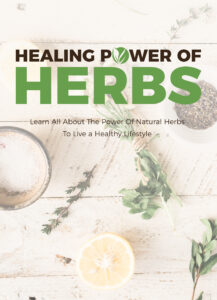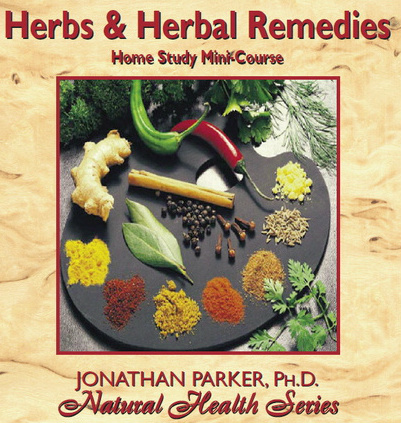Using Herbs for Aromatherapy and Relaxation

Before diving in, please note: This post is for informational purposes only. If you’d like to know more about how we approach topics, feel free to check out our friendly Disclaimer Page.
Hey there, amazing readers! 🖐️ Just a quick note: yes, we know there are a lot of ads here. Trust us, we get it—it’s not the prettiest look, but they help us keep this blog alive and kicking. Those pesky little ads cover the costs of all the behind-the-scenes magic, from hosting and tech stuff to creating content we hope you’ll love.
We’re committed to delivering quality posts, and your support (even just sticking around despite the ads) means everything to us. So, bear with us, and thanks for helping us keep the good vibes rolling. Now, on to the fun stuff! 😉
TRANSLATE BUTTON AT THE END OF THE ARTICLE
A Quick Overview
Have you ever walked through a garden and felt an inexplicable sense of peace wash over you?
Or maybe you’ve caught a whiff of lavender and instantly felt your shoulders drop?
This magical connection between our senses and the natural world is what makes herbs such powerful allies in the quest for relaxation and well-being.
In this article, I’ll guide you through the enchanting world of using herbs for aromatherapy.
From the basics of how aromatherapy works to practical tips for incorporating herbs into your daily routine, you’ll discover how simple plants can elevate your mood and promote relaxation.
Discover the Magic of Herbs for Your Well-Being
Herbs have been used for centuries for their medicinal and aromatic properties.
From ancient civilizations to modern wellness trends, these plants have woven their magic into the fabric of human culture.
When I first started exploring the world of herbal remedies, I was surprised at the profound effects they could have on my mood and overall sense of well-being.
Imagine brewing a cup of chamomile tea after a long day, feeling the warmth seep into your bones as its calming scent envelops you.
That’s what herbs can do; they bring comfort and tranquility in our fast-paced lives.
These natural wonders are packed with compounds that can influence our mood, alleviate stress, and promote relaxation.
It’s like having a little piece of nature at our fingertips, ready to work its magic whenever we need it.
So, why not embrace the healing power of herbs?
They’re not just for cooking or tea; they can revolutionize your relaxation routine and transform your home into a sanctuary of calm.
What Is Aromatherapy and How Does It Work?
Aromatherapy is a holistic healing practice that utilizes the aromatic properties of essential oils extracted from plants, herbs, and flowers.
The idea is pretty simple—when we inhale these scents, we stimulate our brain’s olfactory system, which is closely linked to the emotional centers of our brain.
This connection can have a profound impact on our mood, stress levels, and overall well-being.
Now, how does it work?
Let me break it down:
Inhalation: Breathing in essential oils can trigger emotional responses.
For example, the scent of peppermint can invigorate you, while jasmine may calm your nerves.
Absorption: When we apply these oils to our skin, they can enter the bloodstream, providing therapeutic effects throughout the body.
Diffusion: Using a diffuser allows scents to spread throughout a room, creating an environment that encourages relaxation and tranquility.
I remember my first experience with aromatherapy.
I was feeling overwhelmed, and a friend suggested I try lavender oil in a diffuser.
As the soft scent filled the room, I felt the tension melting away.
It was an eye-opening moment, realizing how powerful these natural fragrances could be.
The Benefits of Using Herbs for Relaxation
Using herbs for relaxation offers a treasure trove of benefits.
First and foremost, they have the potential to reduce stress and anxiety.
Imagine coming home after a hectic day and wrapping yourself in a warm blanket while inhaling the calming scents of chamomile or lemon balm.
It’s like a warm hug for your mind!
Discover the "Healing Power of Herbs" 🌿
Here are some other notable benefits:
Improved Sleep: Certain herbs, like valerian root, promote better sleep quality and help you fall asleep faster.
Mood Enhancement: Herbs can uplift your spirits and help combat feelings of sadness or irritability.
Physical Relaxation: Many herbs have muscle-relaxing properties, which can be beneficial after a tough workout or a long day at work.
Cognitive Enhancement: Some herbs, like rosemary, are thought to boost memory and concentration.
I often turn to herbal remedies when life gets a bit too hectic.
Whether I’m dealing with a stressful project or just need a moment of peace, a cup of herbal tea can work wonders.
Top 5 Herbs That Promote Calm and Serenity
There’s a plethora of herbs that can help soothe your mind and promote relaxation.
Here are my top five favorites:
Lavender: Known for its calming properties, lavender is a staple in aromatherapy.
Its sweet fragrance helps reduce anxiety and promotes restful sleep.
Chamomile: This gentle herb is often enjoyed as a tea.
Chamomile has mild sedative effects, making it perfect for unwinding after a long day.
Lemon Balm: With its refreshing lemon scent, lemon balm can improve mood and relieve stress.
It’s also great for digestive issues.
Peppermint: While it’s invigorating, peppermint can also help alleviate headaches and promote mental clarity.
Just be careful not to use too much; a little goes a long way!
Valerian Root: Known for its sleep-inducing properties, valerian root is often used in herbal sleep remedies.
It can help you drift off peacefully.
These herbs have become my go-to allies when I need a little extra calm.
Just a whiff of lavender or a cup of chamomile tea feels like wrapping myself in a cozy blanket.
How to Create Your Own Herbal Infusions
Creating your own herbal infusions is simpler than you might think, and it can be a fun and relaxing activity.
Here’s how to do it:
Choose Your Herbs: Select your favorite calming herbs, like lavender, chamomile, or lemon balm.
Fresh is best, but dried herbs work just as well.
Gather Your Supplies: You’ll need a heatproof container, hot water, and the herbs.
A teapot or jar will do the trick.
Mix It Up: Add about one tablespoon of dried herbs or two tablespoons of fresh herbs to your container.
Pour Hot Water: Carefully pour boiling water over the herbs, covering them completely.
Steep: Let it steep for about 5 to 10 minutes.
The longer you steep, the stronger the infusion will be.
Strain and Enjoy: Use a fine mesh strainer to separate the herbs from the liquid, and enjoy your soothing infusion!
I love making my herbal infusions on a cozy evening.
Sometimes I mix different herbs for a unique flavor.
This practice not only relaxes me but also invites mindfulness into my day.
Essential Oils: Nature’s Aromatic Powerhouses
Essential oils are concentrated extracts from herbs and plants, offering an array of aromas and therapeutic benefits.
They are the essence of the plant in liquid form, and they’re often used in aromatherapy for their powerful effects.
Here’s why I find essential oils so fascinating:
Concentration: Essential oils are highly concentrated, meaning you only need a few drops to experience their full benefits.
Discover the "Healing Power of Herbs" 🌿
Variety: There are essential oils for almost every ailment or need.
Whether you’re looking for something to boost your mood or help you sleep, there’s an oil for that!
Versatility: You can use them in diffusers, add them to bathwater, dilute them for topical application, or even incorporate them into homemade cleaning products for a fresh scent.
I remember experimenting with eucalyptus oil during flu season.
A few drops in my diffuser cleared my sinuses and made the room smell delightful.
Essential oils have become a staple in my wellness toolkit.
Blending Herbs for a Custom Relaxation Experience
Creating your own blends of herbs and essential oils can be an exciting venture.
Mixing different scents allows you to personalize your relaxation experience.
Here’s how to do it:
Select Your Base: Choose a primary herb or essential oil that resonates with you.
Lavender is a great starting point.
Add Complementary Scents: Think of other herbs or oils that complement your base.
For example, lemon balm pairs beautifully with lavender.
Experiment: Start with a few drops of each oil or a tablespoon of each herb.
Remember, you can always adjust the ratios to find your perfect blend.
Test and Refine: Once you have your blend, try using it in a diffuser or as a massage oil.
Adjust as needed until you find the perfect balance.
Record Your Recipes: Keep track of your blends, so you can recreate your favorites later.
I love experimenting with different combinations, and I often have a few go-to blends for different occasions.
One of my favorites is a mix of lavender and chamomile for a bedtime ritual.
Safe Practices for Using Herbs in Aromatherapy
While herbs and essential oils are generally safe, it’s essential to use them wisely.
Here are some tips to keep in mind:
Dilution: Always dilute essential oils with a carrier oil (like coconut or jojoba oil) before applying them to your skin to prevent irritation.
Patch Test: Before using a new oil or herbal blend, do a patch test on a small area of your skin to check for any allergic reactions.
Consult with Professionals: If you’re pregnant, nursing, or have existing health conditions, consult a healthcare professional before using herbs and essential oils.
Storage: Store your herbs and oils in cool, dark places to maintain their potency.
Quality Matters: Use high-quality, pure essential oils.
Look for reputable brands that offer third-party testing.
I’ve learned the importance of safety the hard way.
I once applied undiluted peppermint oil to my skin, and let me tell you, it wasn’t a pleasant experience!
A little caution goes a long way.
The Role of Herb-Infused Baths in Relaxation
Bathing with herbs can elevate your relaxation game to a whole new level.
It’s a wonderful way to unwind after a long day.
Here’s how to create a soothing herb-infused bath:
Choose Your Herbs: Select herbs known for their relaxing properties, like lavender or chamomile.
Prepare a Herbal Bag: Tie the herbs in a piece of cheesecloth or use a muslin bag.
This keeps the herbs contained and makes for easy cleanup.
Fill the Tub: Run a warm bath and place the herbal bag under the running water.
Light a Candle: Consider lighting a candle or two to create a calming ambiance.
Soak and Relax: Slip into the tub, breathe deeply, and let the soothing scents work their magic.
I often treat myself to herb-infused baths during stressful weeks.
It’s my little sanctuary, where I can recharge and unwind.
Incorporating Herbs into Your Daily Routine
Integrating herbs into your daily life doesn’t have to be complicated.
Here are some simple ways to do it:
Morning Tea: Start your day with a calming herbal tea like chamomile or mint.
Cooking with Herbs: Add fresh herbs to your meals for flavor and health benefits.
Basil and parsley are excellent choices.
Aromatherapy at Work: Use a portable diffuser at your desk or keep a small vial of your favorite essential oil nearby for quick inhalation.
Evening Rituals: Wind down with a warm bath or a cup of herbal tea before bedtime.
I’ve made it a habit to keep a pot of fresh herbs like mint or basil on my windowsill.
Not only do they look beautiful, but they also provide a fresh ingredient for my cooking.
DIY Herbal Pillow Sachets for Sweet Dreams
Creating herbal sachets for your pillows is another delightful way to integrate herbs into relaxation.
These sachets can promote restful sleep and add a charming touch to your bedtime routine.
Here’s how to make one:
Gather Your Materials: You’ll need dried herbs (like lavender or chamomile), a small cloth bag or a piece of fabric, and some string or ribbon.
Fill the Bag: Add about a quarter cup of your chosen dried herbs to the bag.
Secure It: Tie the bag closed with string or ribbon, ensuring no herbs escape.
Place Under Your Pillow: Slip the sachet under your pillowcase or beside your bed.
Enjoy Sweet Dreams: As you drift off to sleep, breathe in the soothing aromas.
I’ve found that using herbal sachets has made a noticeable difference in my sleep quality.
Plus, they make lovely gifts for friends who could use a little extra relaxation!
Conclusion: Embrace Herbs for a Happier You!
Herbs can be transformative allies in our pursuit of relaxation and well-being.
They offer a natural way to combat stress, enhance our mood, and promote restful sleep.
Whether you’re sipping a calming cup of chamomile tea, soaking in a herb-infused bath, or creating your own aromatic blends, these little plants can bring joy and tranquility to your life.
So, why not take the plunge?
Embrace the wisdom of nature and let herbs guide you on a path to serenity.
After all, a happier you is just a whiff away!

The Enlightenment Journey is a remarkable collection of writings authored by a distinguished group of experts in the fields of spirituality, new age, and esoteric knowledge.
This anthology features a diverse assembly of well-experienced authors who bring their profound insights and credible perspectives to the forefront.
Each contributor possesses a wealth of knowledge and wisdom, making them authorities in their respective domains.
Together, they offer readers a transformative journey into the realms of spiritual growth, self-discovery, and esoteric enlightenment.
The Enlightenment Journey is a testament to the collective expertise of these luminaries, providing readers with a rich tapestry of ideas and information to illuminate their spiritual path.
Our Diverse Expertise 🌟
While our primary focus is on spirituality and esotericism, we are equally passionate about exploring a wide range of other topics and niches 🌍📚. Our experienced team is dedicated to delivering high-quality, informative content across various subjects ✨.
To ensure we provide the most accurate and valuable insights, we collaborate with trusted experts in their respective domains 🧑🏫👩🏫. This allows us to offer well-rounded perspectives and knowledge to our readers.
Our blog originally focused on spirituality and metaphysics, but we’ve since expanded to cover a wide range of niches. Don’t worry—we continue to publish a lot of articles on spirituality! Frequently visit our blog to explore our diverse content and stay tuned for more insightful reads.
Discover the "Healing Power of Herbs" 🌿
Unlock the ancient wisdom of herbal remedies with this comprehensive guide! Perfect for beginners and enthusiasts alike, this e-book dives into the powerful benefits of herbs for health, wellness, and natural healing.
Inside, you’ll find:
Easy-to-follow recipes for teas, tinctures, and remedies.
A guide to the most effective herbs for common ailments.
Tips on growing and storing your own herbs.
Transform your health naturally and embrace the healing power of nature. 🌱 Start your journey today!







